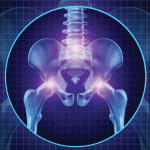“I just waited, and a tear rolled down this girl’s cheek and her dad’s cheek,” he said. “Her sister had died [during] the month of May the year prior.”
When working with patients, Dr. Schubiner explains the connection of pain coming from the brain. “When you think of it that way,” he said, “the pain that occurs that’s due to stress or emotions, it’s exactly the same and every bit as severe as pain that occurs with a kidney stone or fracture.”
Results of Pain Reprocessing Therapy
To help patients with psychological-related pain, Dr. Schubiner advises the use of pain reprocessing therapy to help people decrease their fear and calm their brain to change its neural circuits.
Dr. Schubiner shared the results of a randomized clinical trial he coauthored published in JAMA Psychiatry in 2022.1 In the study, 151 adults with chronic back pain (i.e., pain symptoms lasting more than 10 years) and a patient-reported pain intensity rating of 4 out of 10 were randomized into three treatment groups: pain reprocessing therapy, a saline injection in the back (placebo) or their usual, routine care.
Patients in the pain reprocessing group had eight psychological treatment sessions over four weeks. The sessions were designed to “reconceptualize their pain as due to nondangerous brain activity rather than peripheral tissue injury, using a combination of cognitive, somatic and exposure-based techniques,” according to the study.
After the treatment, the mean pain score was 1.18 for the pain reprocessing therapy group, 2.84 for the placebo group and 3.13 for the usual care group. Among the 50 participants randomized to undergo pain reprocessing therapy, 66% of patients were pain-free or nearly pain-free post-treatment compared with 20% of patients in the placebo group and 10% of those in the usual-care group.
The study received funding from the U.S. National Institute of Health’s National Institute on Drug Abuse, the National Institute of Mental Health and the National Center for Advancing Translational Sciences.
Additional Treatment
Many of Dr. Schubiner’s patients also work with therapists, but may find physical and psychological support from other clinicians. This approach works most effectively if that professional has training in and understanding of central pain, he noted.
Not all patients will be successful using this pain management approach, he said. Some patients don’t fully believe in the treatment, which can affect its results. Other patients may have ongoing issues in their life or severe childhood trauma that affect their ability to reprocess pain.

